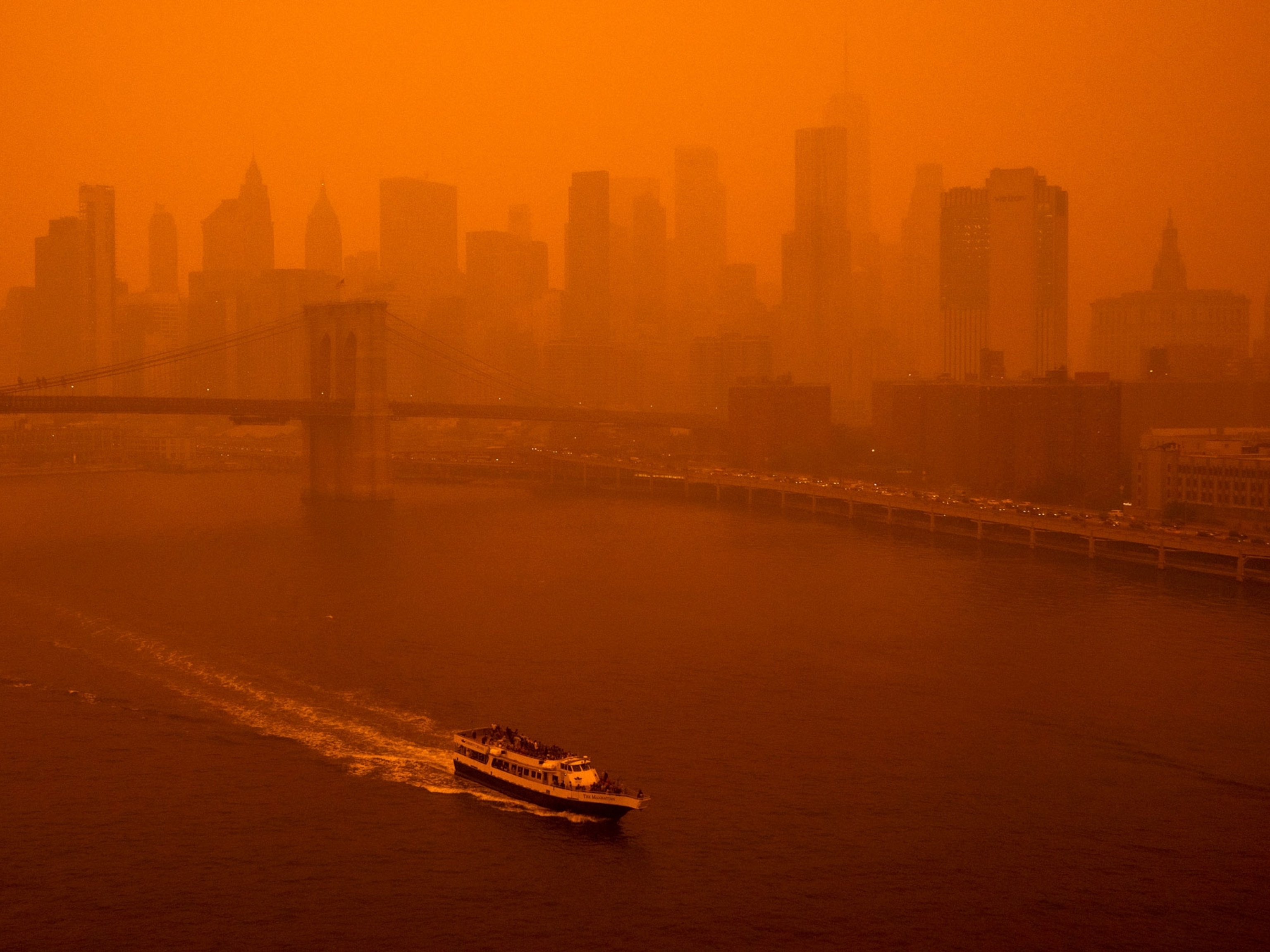














What It's Like to Live Where the Air Is Toxic
Deteriorating air quality in India's capital territory is the new normal.
In early November, smog levels peaked in Delhi, India. The levels of particulate matter reached 999—the highest machines could read. Smoke and fumes from unregulated crop-burning across northern India, factories, cars, and even fire-crackers set off for the Diwali festival of lights had combined to form a choking cocktail. The Chief Minister likened the city to a gas chamber.
Despite stiff opposition from many quarters, the city readied itself for the Annual Half Marathon. The event registered a record turnout.
I arrived in Delhi a week later. Air quality levels remained between ‘poor’ and ‘very poor’ although the smog had reduced. The extended amounts of time I spent outside photographing led to some chest pains and also made me feel dizzy. Upon returning from construction sites and the Yamuna river banks, I frequently coughed up blackish sputum.
But this was nothing compared to what others told me they faced even just a week back, from nausea to severe throat and eye irritation. It is widely considered that living in Delhi cuts one’s average lifespan by more than 4 years. Masks are a necessity to block out the particulate matter that settles deep inside the lungs, causing irreparable damage.
Particularly vulnerable is the sizeable population of Delhi’s migrant laborers who sleep outdoors. Most of these people that I talked to cannot afford masks or were not sufficiently attuned to their necessity.
Delhi today is a quagmire of administrative impasses, and it is the people who suffer most.
You can see more of Datto's work on his website.
Related Topics
You May Also Like
Go Further
Animals
- Octopuses have a lot of secrets. Can you guess 8 of them?
- Animals
- Feature
Octopuses have a lot of secrets. Can you guess 8 of them? - This biologist and her rescue dog help protect bears in the AndesThis biologist and her rescue dog help protect bears in the Andes
- An octopus invited this writer into her tank—and her secret worldAn octopus invited this writer into her tank—and her secret world
- Peace-loving bonobos are more aggressive than we thoughtPeace-loving bonobos are more aggressive than we thought
Environment
- Listen to 30 years of climate change transformed into haunting musicListen to 30 years of climate change transformed into haunting music
- This ancient society tried to stop El Niño—with child sacrificeThis ancient society tried to stop El Niño—with child sacrifice
- U.S. plans to clean its drinking water. What does that mean?U.S. plans to clean its drinking water. What does that mean?
- Food systems: supporting the triangle of food security, Video Story
- Paid Content
Food systems: supporting the triangle of food security - Will we ever solve the mystery of the Mima mounds?Will we ever solve the mystery of the Mima mounds?
History & Culture
- Strange clues in a Maya temple reveal a fiery political dramaStrange clues in a Maya temple reveal a fiery political drama
- How technology is revealing secrets in these ancient scrollsHow technology is revealing secrets in these ancient scrolls
- Pilgrimages aren’t just spiritual anymore. They’re a workout.Pilgrimages aren’t just spiritual anymore. They’re a workout.
- This ancient society tried to stop El Niño—with child sacrificeThis ancient society tried to stop El Niño—with child sacrifice
- This ancient cure was just revived in a lab. Does it work?This ancient cure was just revived in a lab. Does it work?
Science
- The unexpected health benefits of Ozempic and MounjaroThe unexpected health benefits of Ozempic and Mounjaro
- Do you have an inner monologue? Here’s what it reveals about you.Do you have an inner monologue? Here’s what it reveals about you.
- Jupiter’s volcanic moon Io has been erupting for billions of yearsJupiter’s volcanic moon Io has been erupting for billions of years
- This 80-foot-long sea monster was the killer whale of its timeThis 80-foot-long sea monster was the killer whale of its time
Travel
- How nanobreweries are shaking up Portland's beer sceneHow nanobreweries are shaking up Portland's beer scene
- How to plan an epic summer trip to a national parkHow to plan an epic summer trip to a national park
- This town is the Alps' first European Capital of CultureThis town is the Alps' first European Capital of Culture
- This royal city lies in the shadow of Kuala LumpurThis royal city lies in the shadow of Kuala Lumpur




